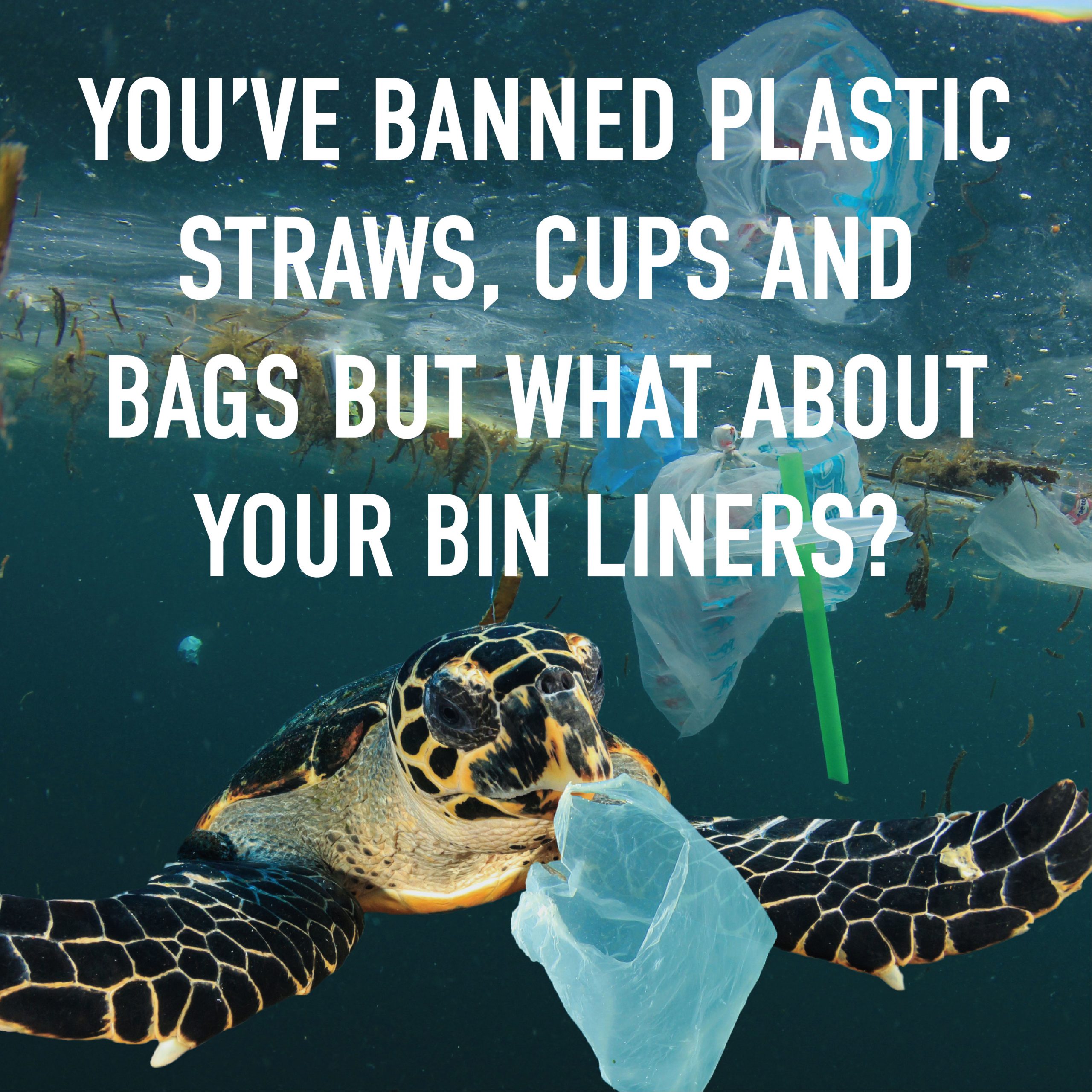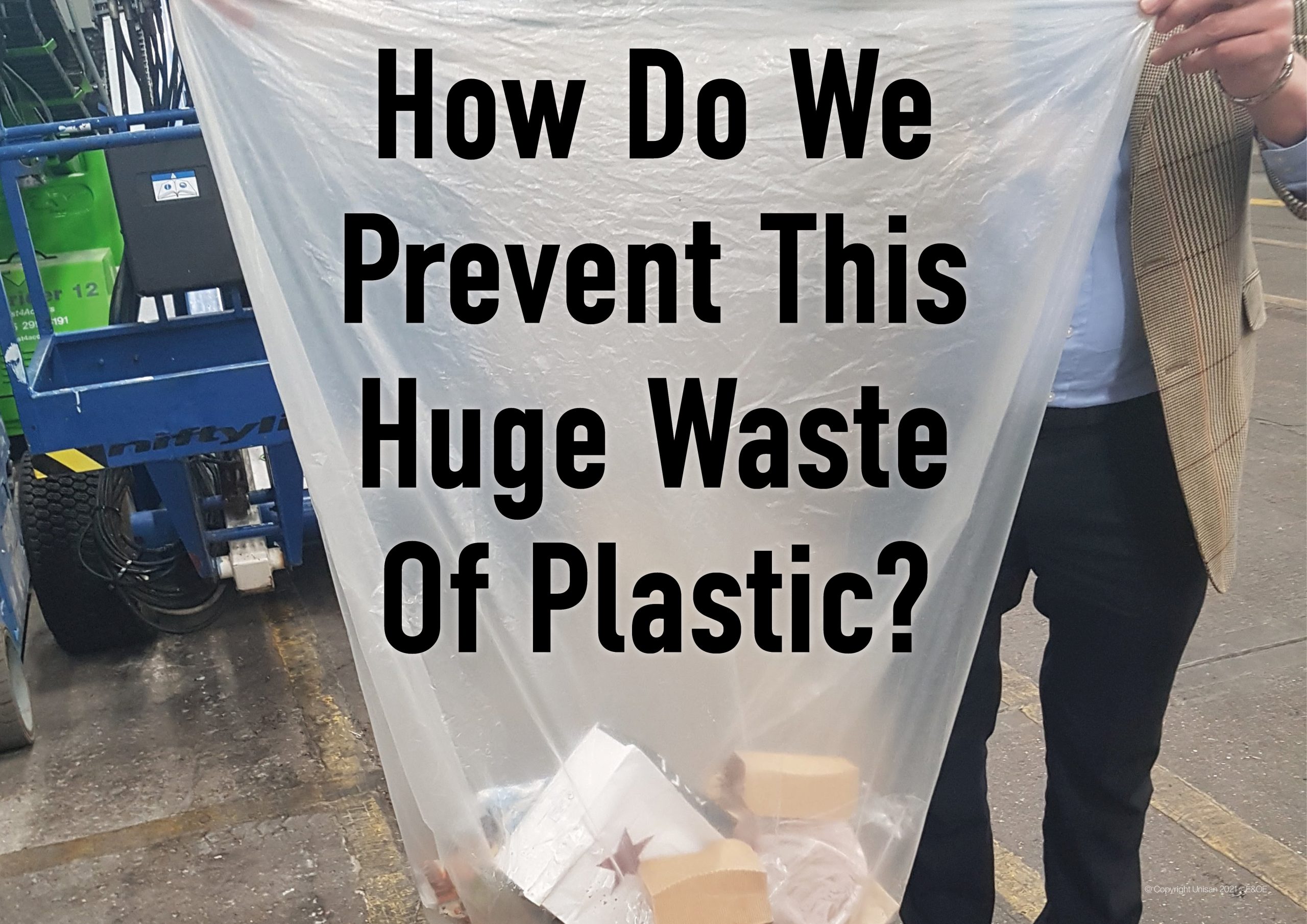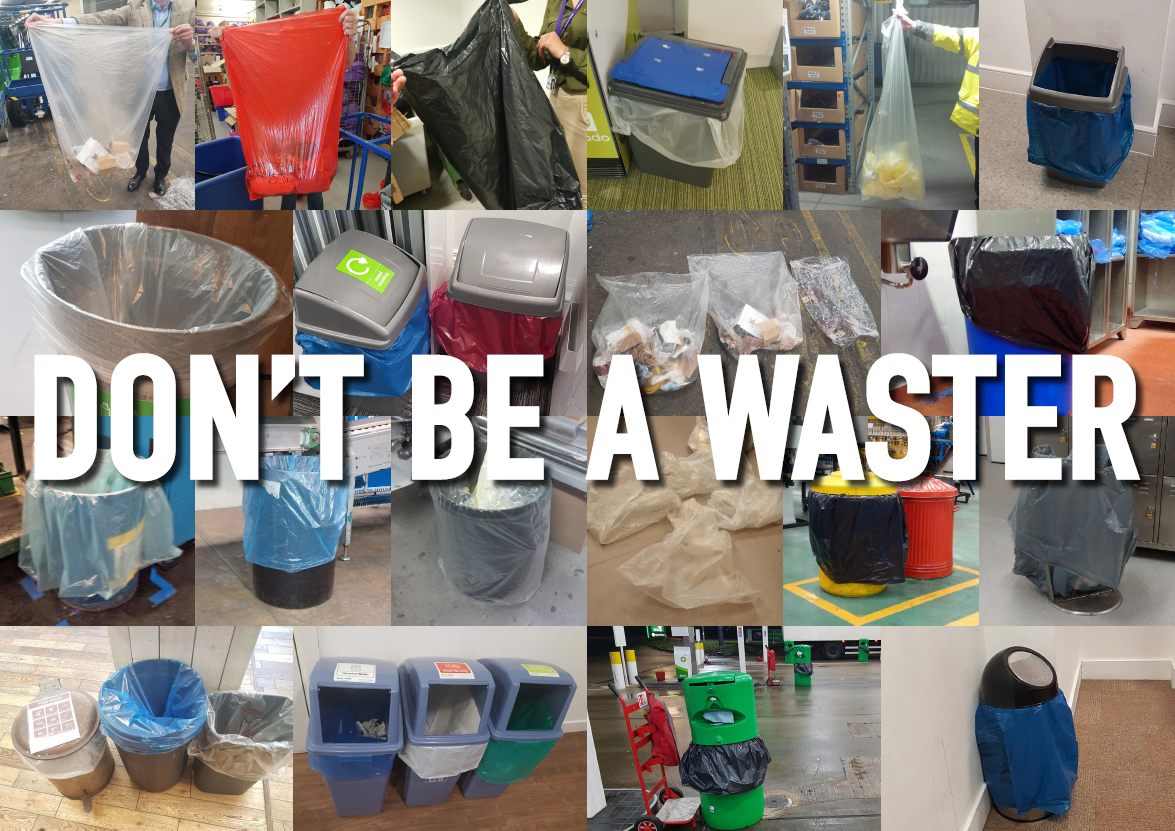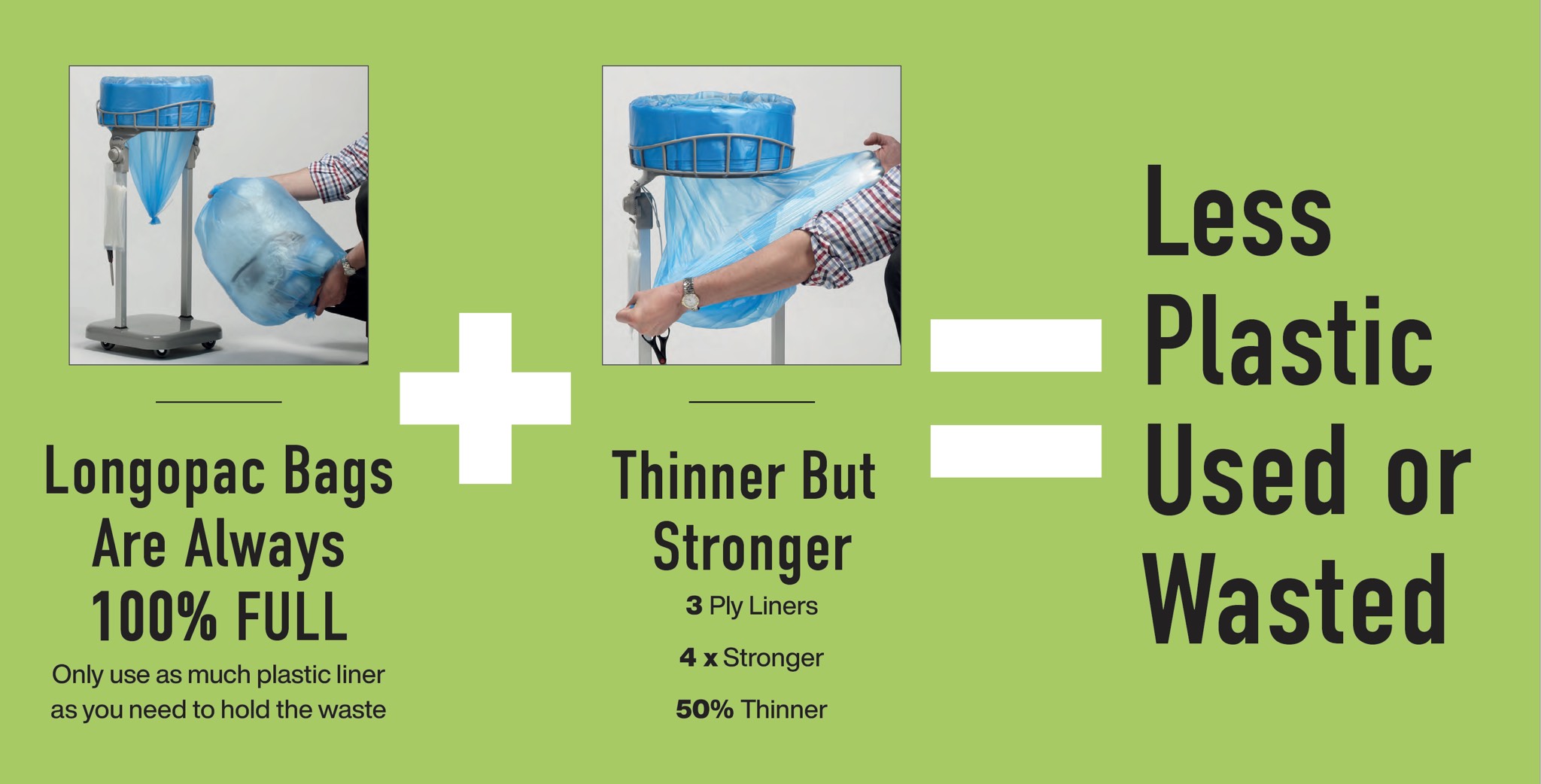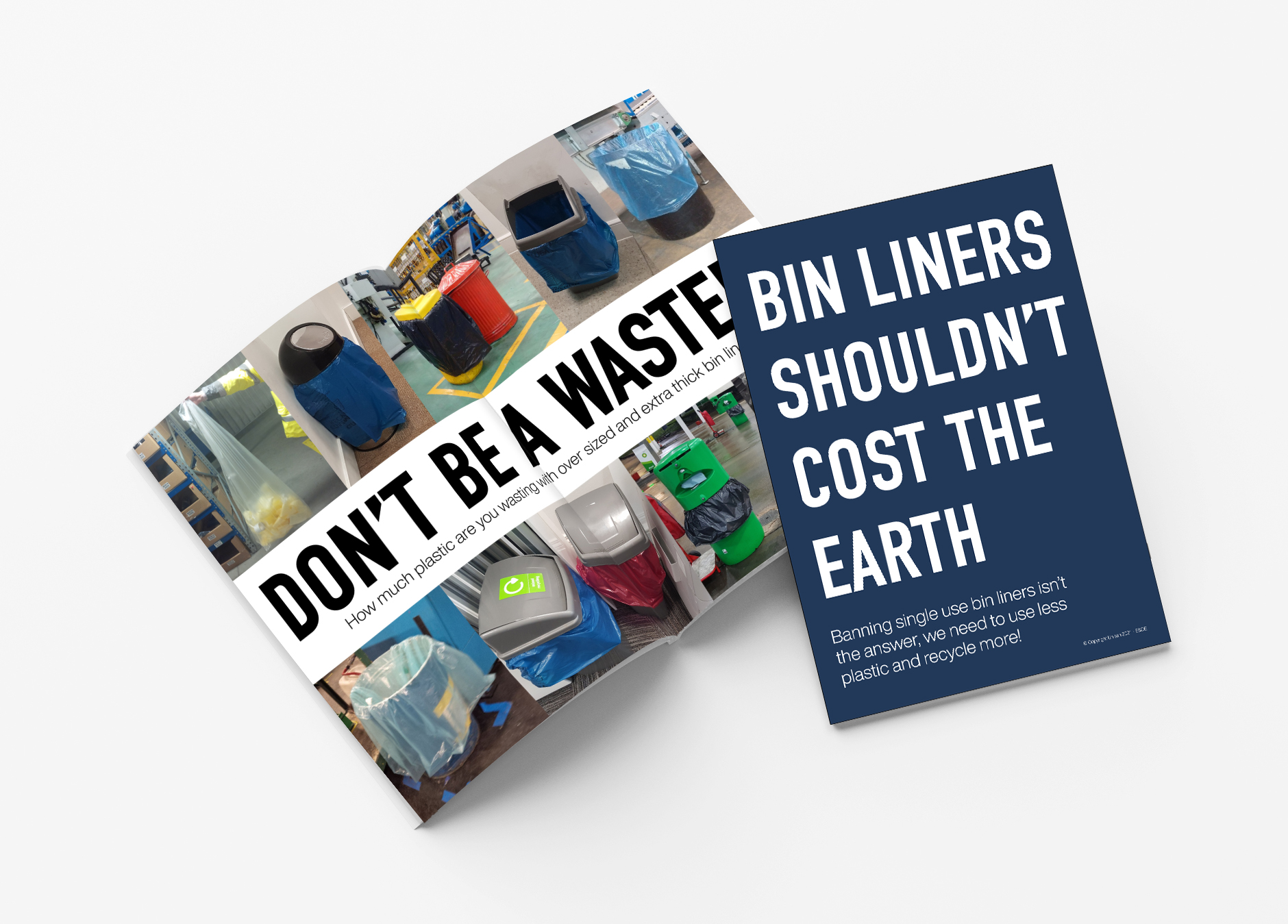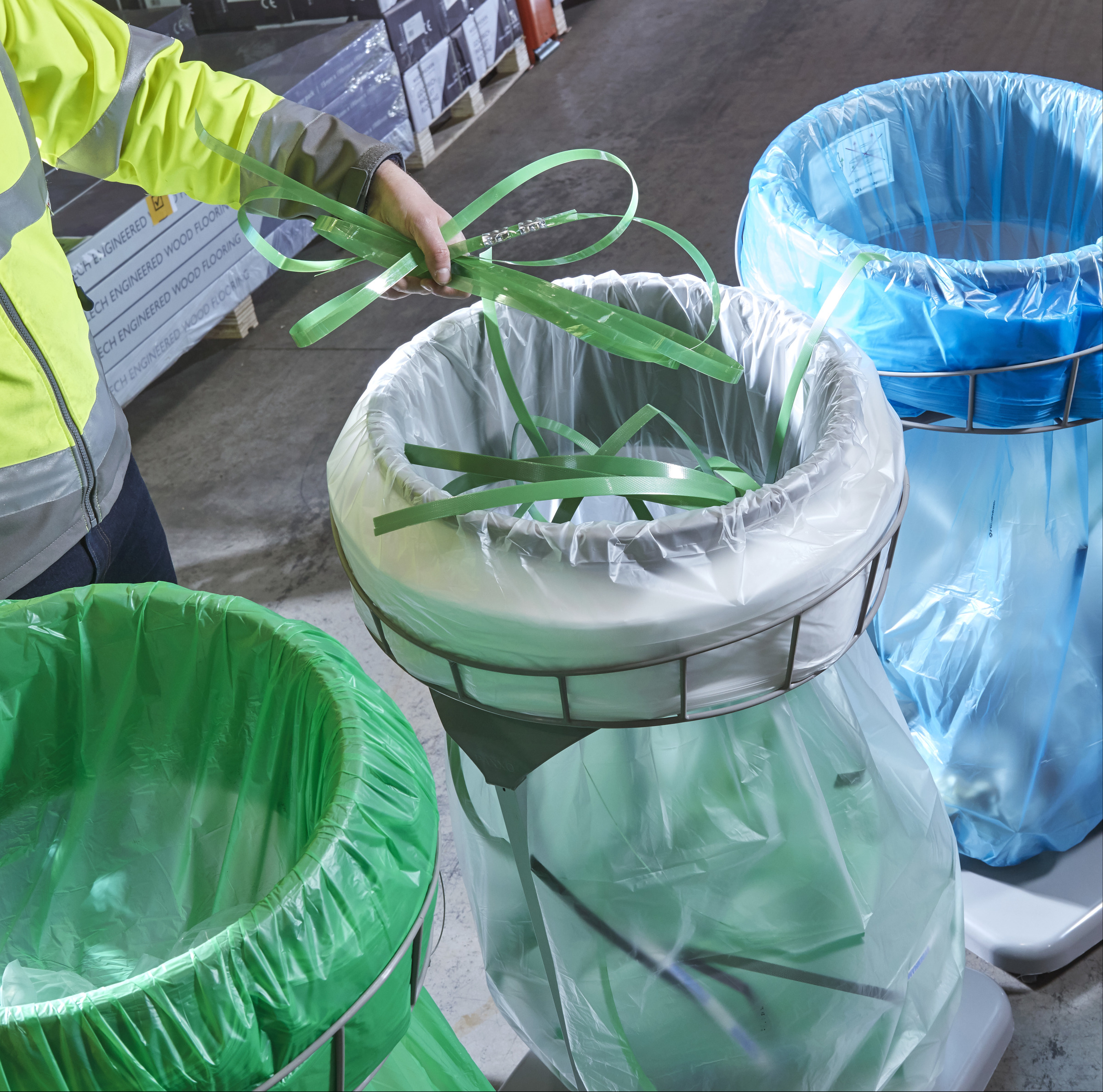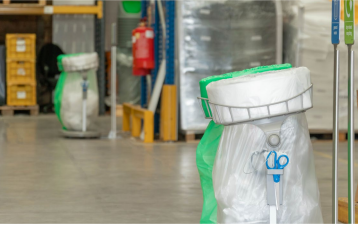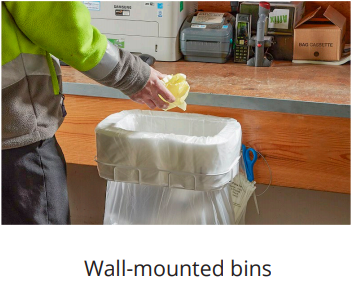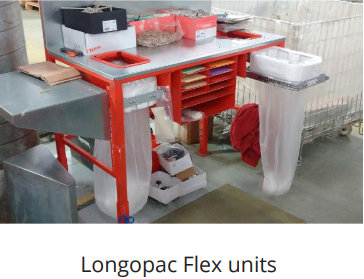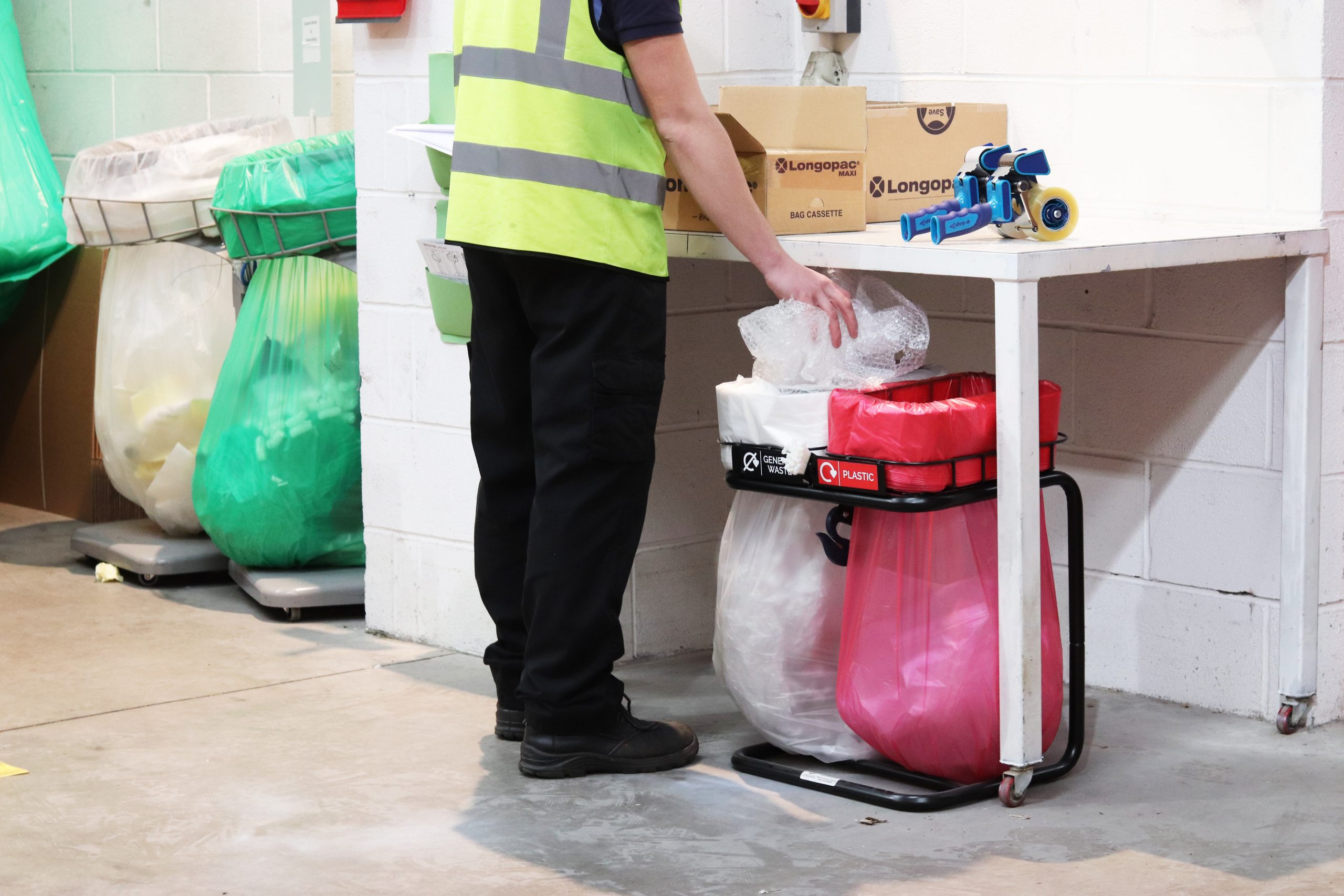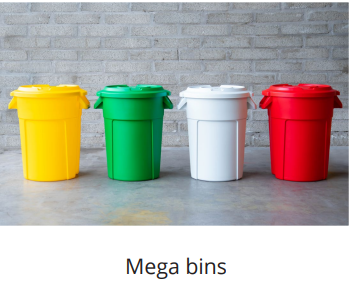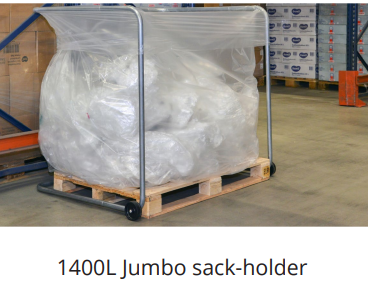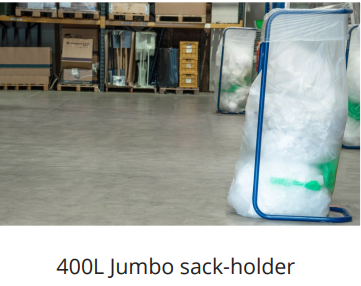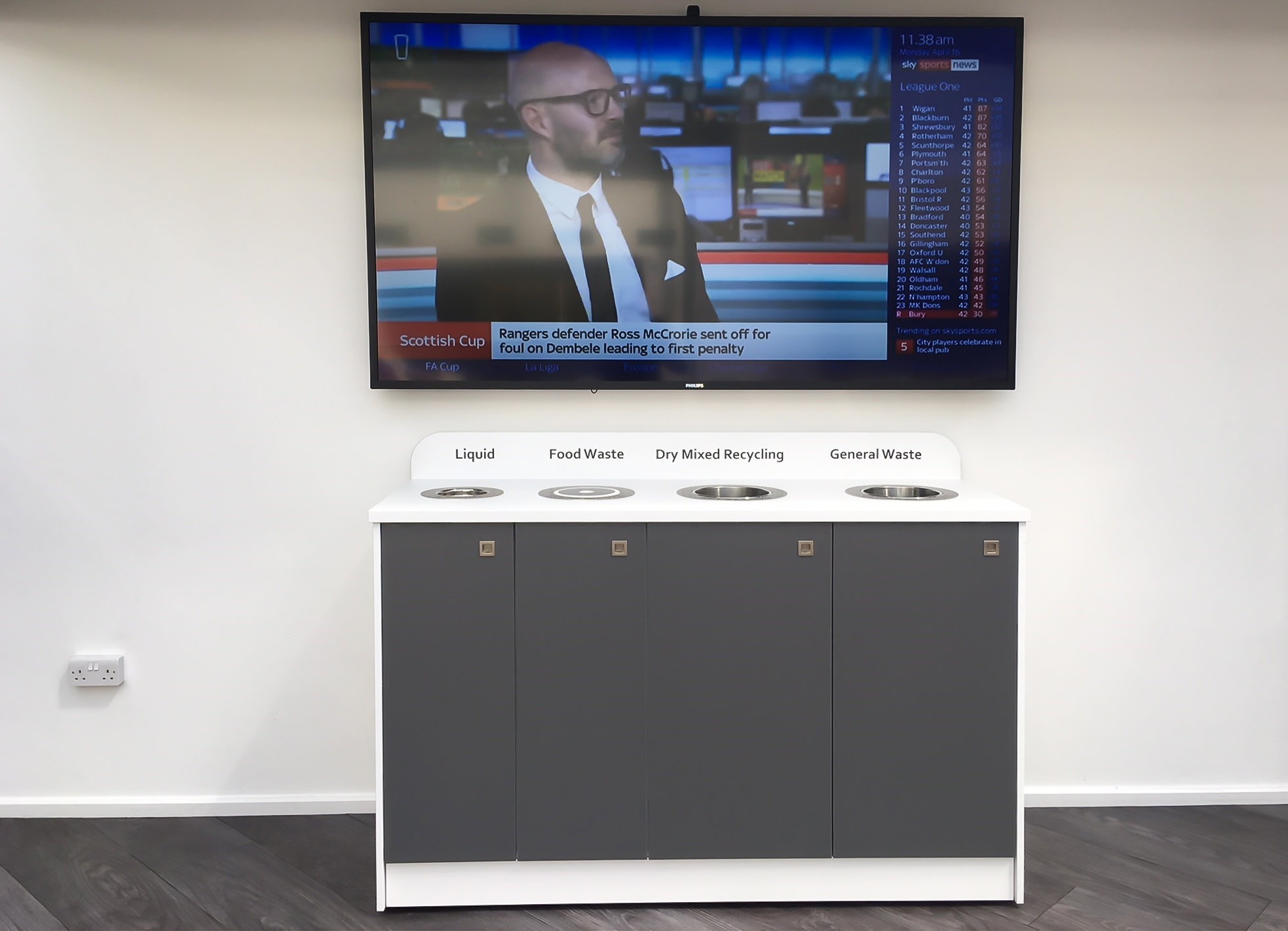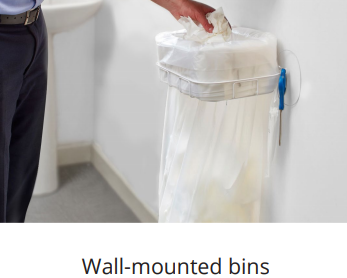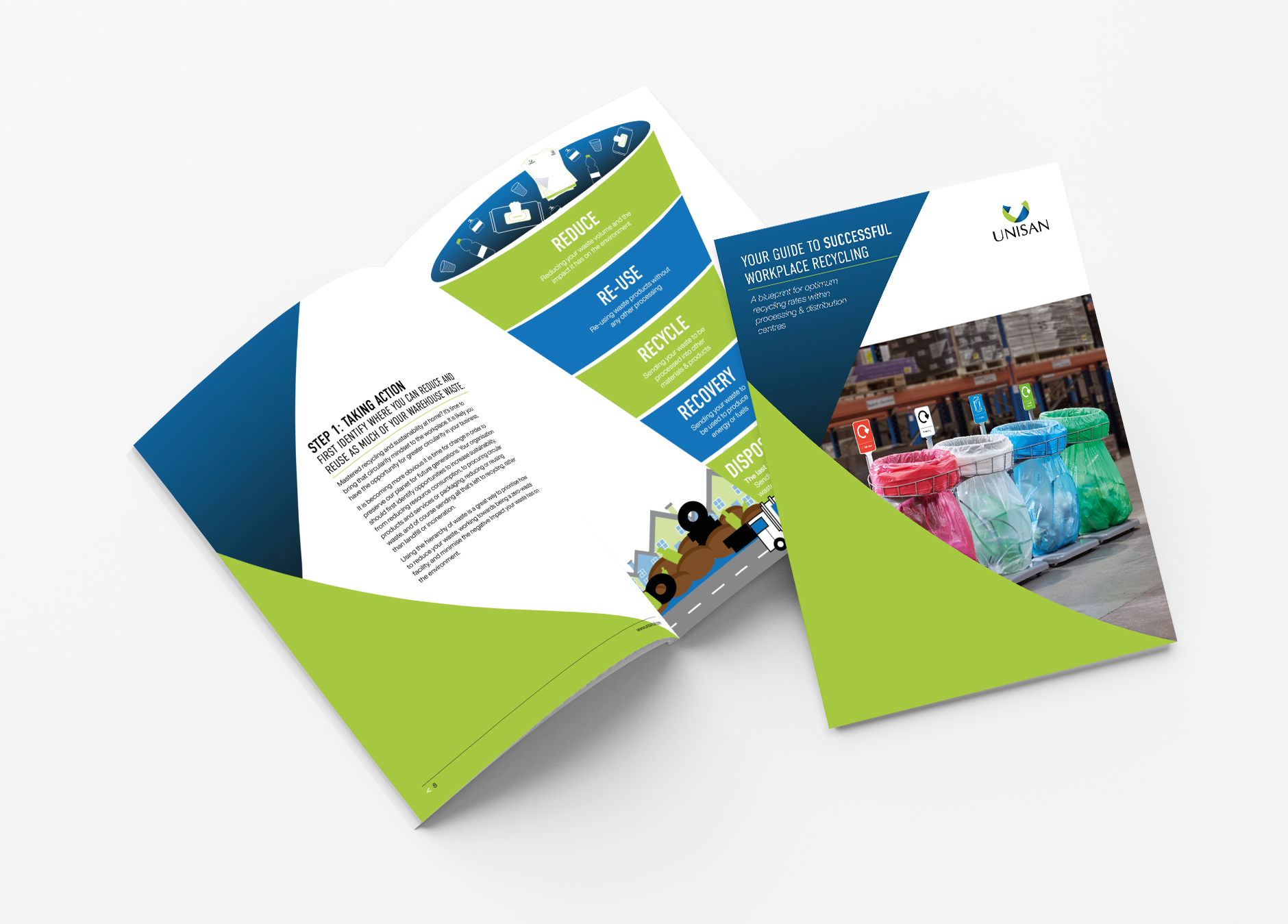Is there a way you haven’t already thought of, to quickly and easily Reduce Plastic (and Carbon Footprint) in your Distribution Centre / Warehouse / Processing Centre?
The UK’s legal Net Zero target is 2050. While this sounds a long time away, progressive industries are acting now and have Net Zero targets within the next decade. From an ethical and a share price point of view organisations will have to become net zero, and consumers are increasingly expecting brands to take action. Many organisations with large distribution centres and warehouses have a goal of becoming net zero, or some have even become net zero already, but are offsetting carbon. The cost of offsetting carbon is due to increase dramatically, so other sustainable gains are going to need to be looked at within the business, in order to be profitable. Learn more about becoming carbon neutral and offsetting carbon here.
With these bold, but necessary goals, distribution centres and warehouses are scurrying to find ways to reduce plastic in their facilities, in order to help achieve the carbon footprint goals, and do their bit towards sustainability. Many organisations have banned plastic cups, bags, bottles and straws, and made the move towards more eco friendly packaging options. You also may have worked on reducing your carbon footprint by changing lighting to LED, starting to using solar power as apposed to coal or gas, and working towards changing your motor fleet to electric. This is an excellent start, but many facilities managers we work with echo the same chorus, ‘We seem to have hit a brick wall with plastic reduction’. Thankfully, we have a quick, easy tip up our sleeve on how you can further decrease plastic in your warehouse, without going to any extra trouble. Bin liners. Sounds boring, doesn’t it? It’s not!
Many of our clients didn’t realise how much plastic they were using (and wasting) with bin liners and when handling waste on site. Most of their liners were only 30-50% full and they were using 1,000’s per year! Some organisations have tried no bin liner, just a container. We have proved time and time again that this is not a viable solution. It causes contamination, and creates extra time / labour in emptying the bins and also cleaning out the container.
Unlike other ways to reduce plastic in your warehouse and distribution centre, this change does not involve any complicated production changes. You are using bin liners already, so why not pick bin liners that save you 70% plastic? In the overall carbon of your business, the bin liner savings may only make a 2 % carbon reduction – but this could be the difference in you achieving 98%, to completely net zero. The little gains add up to an important part.
By implementing our continuous liner system in their bins, within just 12 months we have helped:
A large corporate office to reduce their plastic usage by 10 tonnes and the carbon footprint by 46 tonnes!
A UK clothing retailers distribution centre to reduce plastic usage by 58 tonnes and the associated carbon footprint by 249 tonnes!
A famous UK bakery manufacturer & retailer to reduce the plastic usage by 42 tonnes and the carbon footprint by 179 tonnes!
And those are just a few of many examples, and not including all sites for those brands. Many of our clients are now implementing the Longopac continuous bin liner system across all sites, due to the simple and easy CO2 saving. In the words of one of our clients, ‘it’s a low hanging fruit that’s worth picking’, and another famous client ‘Longopac is a no-brainer… there is a sizable plastic and carbon reduction, as well as a great case study for GP’. It’s a system that is trusted by many leading brands, such as Coca cola, Pepsico, White Stuff, Microsoft, Beiersdorf, Astra Zeneca, Pfizer and more! Is now the time your organisation should start trusting it too?
Visit this page to calculate your potential plastic savings. All we need to know, is on average how many bin liners you use, per day.
There’s more than one reason these big brands love the Longopac continuous liner system. Besides reducing plastic usage by 70%, it only takes 20 seconds to change the liner (in comparison with approx. 51 seconds), reducing labour costs by 38%. We have also proven it to reduce waste collection costs by 35%, increase recycling rates by 58%, and massively increase hygiene levels.
Click here to see inspiration on our Longopac continuous liner system
How can Longopac continuous bin liners save your warehouse so much plastic and CO2?
With Longopac, every bag is 100% full, so only the exact amount of liner needed is used.
Also, because the waste is compacted, there is less wasted space due to liners being full of air, meaning a further reduction in plastic.
The way the liner material is constructed means they use 55% less plastic than standard bin liners, but are 4x stronger. The liners are also made from 50% recycled plastic.
It is also the strongest bin bag in the world, that we know of. This means the bag won’t split or tear, so no need for double bagging!
If changing your bin liner saved the equivalent of one tree absorbing CO2 for 7 years, why wouldn’t you?
How can Longopac reduce labour costs by 38%?
With Longopac, each liner takes just 20 seconds to change, and there’s up to 160m of continuous liner ready for immediate re-lining.
Because the Longopac liners are always 100% full, less time is spent transporting waste around site.
Also, the strength of the liner means there’s no wasted time double bagging or cleaning up from split liners
How will Longopac reduce waste collection costs by 35%?
With the Longopac system, there’s no wasted space in liners taken up by fresh air! Not only is every liner 100% full, the waste is compacted when removed from the bin, so that all the air is pushed out.
This means that the waste takes up much less space in your external bins, therefore reducing the frequency of your collections.
How can the Longopac continuous bin liner system help you increase recycling rates by 58%?
The Longopac system makes recycling simple and achievable in any environment. With colour-coded liners and options for free-standing signs or lid signage, you can clearly communicate what waste goes where – even in heavy-duty or strictly regulated industrial environments.
Translucent liners also make contamination easier to spot and increase accountability.
Feedback from a large UK bakery retailer; “Aside from the massive benefits of the liners, the Longopac Dynamic bins are way more durable than the current bins we are using. We are currently spending around £250k per year on new bins for our shops…! During the 2 year trials we have done with Longopac Dynamic bins, we haven’t replaced a single bin due to the strength and durability. We are building this saving into the justification case for going ahead with Longopac bins. So we will be spending less overall as we will no longer have the cost of damaged replacing bins.”
Quickly filling bins with material such as pallet wrap results in avoidable journeys to the compactor or skips. Matching the correct size bin and process to the waste can save up to 38% in labour!
Inconsistent bins & poor signage results in contaminated waste, significantly impacting recycling rates. Consistent bins, translucent liners & signage are proven to increase recycling by 58%!
A disconnected waste process within a picking or sorting area significantly impacts productivity. When bins are integrated within the entire sorting process, this level of continuous improvement has been proven to save £100,000 per year!
Choosing the right bin is important, whether it is for bulky packaging waste, and pallet wrap film, under bench for production line waste, food waste and recycling in your canteen area, waste and recycling for offices and washrooms…..
Or for your canteen break out areas, offices and washrooms…
Recycling stations with Longopac
CafeCrush Reverse Vending Machines
Cutting down packaging waste should be a key priority for anyone who works in a warehouse, whether that be facilities managers, administration staff, operations managers or those on the warehouse floor. Wasting materials is not only bad for the environment and profit margins, but can also create health and safety concerns.
The United Kingdom is bustling with busy pick, pack and distribution centres, especially recently since the online retail sector has been booming. Distribution centres, supply chain management companies and even warehouses can generate a considerable amount of waste material from packaging, meeting orders, assembling items and inventory management. These centres often operate at high-volumes, all-day, every day; therefore, any downtime would result in a loss of their revenue.
The problem with these businesses, however, is that they contribute significantly to the amount of waste cardboard, paper and plastic that this country produces. Think label backings, tape waste… and returns departments create a huge amount of waste. The UK currently has a online retail return rate of 25%, and unfortunately you cannot control how the goods are packaged by the consumer, and overzealous packaging and tape used can mean extra waste.
Due to the size and scale of these distribution sites and warehouses, implementing a sustainable waste management program that spans such a large area needs meticulous planning. No matter how many goals your distribution has to have minimal waste, these centres naturally produce large amounts of waste. Having a suitable ‘binfastructure’ in place to encourage recycling can help divert your waste from going to landfill or incineration. This means it will be reprocessed into something else, and get a new life, protecting the environment and contributing to a circular economy. For tips on how to increase recycling in your warehouse, call us today, our friendly team will be happy to share tips. We also have a downloadable recycling guide;

